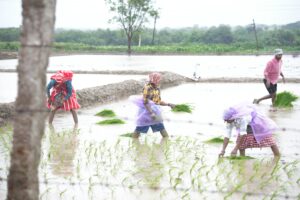The Role of Architects in Home Construction
The Importance of Architects in Home Construction
This section will explore the crucial role that architects play in the home construction process, highlighting their responsibility in designing functional and aesthetically pleasing residential spaces while ensuring compliance with local building codes and regulations.
Key Responsibilities of Architects in Home Construction
Architects in home construction are responsible for merging functionality with aesthetics while adhering to local regulations. They create designs that not only meet the client’s lifestyle needs but also fit within environmental and zoning limitations, ensuring every home is both beautiful and legally compliant.
Collaboration Between Architects and Clients
Effective collaboration between architects and clients is essential in home construction. Architects work closely with clients to capture their vision and translate it into architectural plans, ensuring the final design reflects the client’s desires while being practical and feasible for construction.
Ensuring Compliance with Building Codes
A critical aspect of architects’ roles in home construction is ensuring all designs adhere to local building codes and regulations. This ensures the safety, legality, and structural integrity of residential buildings, safeguarding homeowners and future occupants from potential legal and structural issues.
Project Planning and Architects in Home Construction
This section will discuss how architects contribute to the initial planning phase of home construction, detailing how they collaborate with clients to understand their vision and requirements, and translate these into detailed project plans and blueprints that guide the construction process.
The Role of Architects in Project Planning
Architects in home construction play a pivotal role in the project planning phase. They work meticulously to translate the client’s vision into detailed blueprints, ensuring that the design is both practical and innovative. By understanding client requirements, architects lay the groundwork for a smooth construction process, integrating functional elements with creative flair.
Creating Blueprints and Detailed Project Plans
In home construction, architects are tasked with creating comprehensive blueprints that serve as the guide for the entire building process. These plans detail everything from structural elements to interior layouts, ensuring that every aspect of the construction aligns with the client’s vision while being feasible and within budget.
Client Collaboration in the Planning Phase
Successful home construction relies heavily on the collaboration between architects and clients during the planning phase. This partnership ensures that the architect fully understands the client’s expectations and requirements, allowing for a design that not only captures their vision but also adheres to practical and regulatory considerations.
Architectural Design Trends in Home Construction
This section will cover the latest design trends that architects incorporate into home construction, focusing on innovative materials, sustainable practices, and modern aesthetics that enhance the functionality and appeal of residential properties.
Innovative Materials in Architectural Design
Architects in home construction are increasingly utilizing innovative materials that enhance both sustainability and aesthetics. These materials often include eco-friendly options that improve energy efficiency and reduce environmental impact while maintaining structural integrity. The use of such materials reflects a growing trend toward sustainable building practices that align with modern design preferences.
Sustainable Design Practices in Modern Homes
Sustainability has become a crucial focus for architects in home construction. Modern design trends emphasize the use of renewable resources, energy-efficient systems, and designs that minimize the ecological footprint. Architects are integrating these sustainable practices into their projects to meet the demands of environmentally conscious homeowners while adhering to modern aesthetic standards.
Embracing Modern Aesthetics in Residential Architecture
Modern aesthetics have defined the current architectural trends in home construction, with architects blending minimalistic designs with functional elegance. This trend is characterized by open spaces, natural light, and clean lines, which not only enhance the visual appeal but also improve the living experience by creating harmonious and inviting environments.
Choosing the Right Architects in Home Construction
This section will provide guidance on selecting the appropriate architects for your home construction project, detailing factors to consider such as experience, style compatibility, portfolio evaluation, and client testimonials to ensure a successful collaboration.
Evaluating Architectural Experience and Expertise
When choosing architects in home construction, it’s essential to assess their experience and expertise. A seasoned architect brings a wealth of knowledge, problem-solving skills, and innovative ideas to a project, ensuring that the design and construction process runs smoothly and efficiently. By evaluating past projects and understanding their specialty areas, clients can determine if an architect’s experience aligns with their project needs.
Compatibility with Personal Style and Vision
Ensuring that an architect’s design style aligns with the client’s vision is crucial for a successful home construction project. When selecting architects in home construction, reviewing their portfolio helps clients gauge if their aesthetic preferences match personal style desires. This compatibility facilitates clear communication and helps in achieving a cohesive design that meets the client’s aspirations.
The Importance of Client Testimonials and Portfolio Reviews
Client testimonials and comprehensive portfolio reviews provide valuable insights when selecting architects in home construction. Testimonials offer first-hand accounts of previous clients’ experiences, highlighting the architect’s communication skills, reliability, and project outcomes. Meanwhile, examining a complete portfolio showcases the architect’s versatility, creativity, and ability to execute various styles, guiding clients in making an informed decision.
Conclusion: The Integral Role of Architects in Home Construction
The role of architects in home construction is indispensable, as they bridge the gap between client visions and functional, aesthetic living spaces. Their expertise in balancing design elements with regulatory compliance ensures that every home not only meets individual preferences but also adheres to safety and legality standards. Architects contribute significantly during the planning phase and beyond, integrating sustainability and modern trends into their designs. Selecting the right architects involves thorough evaluation and alignment with the client’s style, reflecting the importance of this decision in achieving successful home construction projects in the USA.






